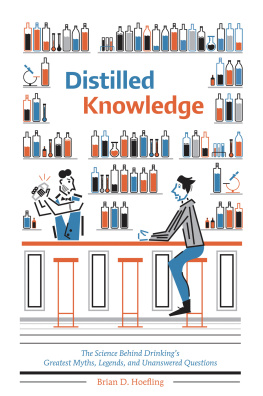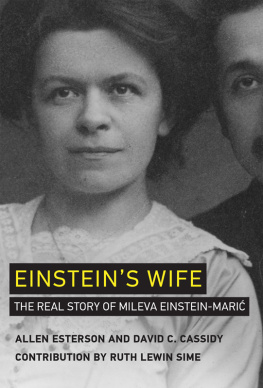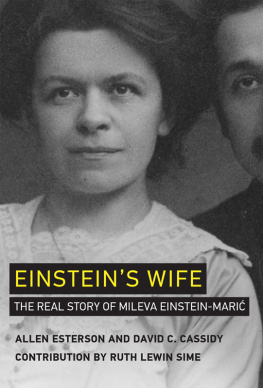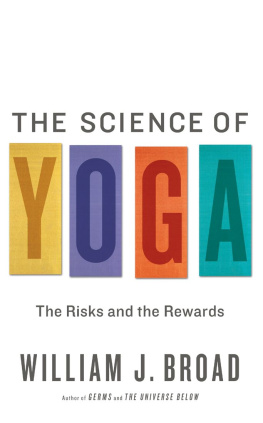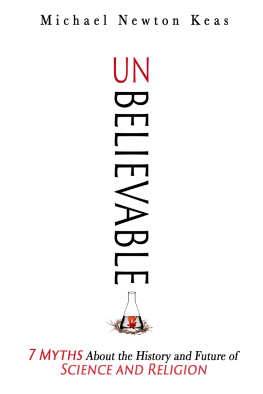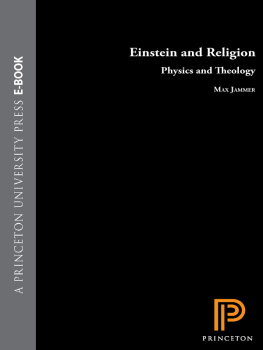Table of Contents
Science Secrets
The Truth about Darwin's Finches, Einstein's Wife, and Other Myths
Alberto A. Martnez

UNIVERSITY OF PITTSBURGH PRESS
Published by the University of Pittsburgh Press, Pittsburgh, Pa., 15260
Copyright 2011, Alberto A. Martnez
All rights reserved
Manufactured in the United States of America
Printed on acid-free paper
10 9 8 7 6 5 4 3 2 1
ISBN 13: 978-0-8229-62304
ISBN 10: 0-8229-6230-6
Library of Congress Cataloging-in-Publication Data Martinez, Alberto A.
Science secrets : the truth about Darwin's finches, Einstein's wife, and other myths / Alberto A. Martinez.
p. cm.
Summary: Accessibly written in an engaging style, this book examines classic popular stories in the history of science. Some of the myths discussed include Franklin's Kite, Newton's Apple, and Thomson's plum pudding model of the atom. Martinez successfully holds readers' attention by relying on rich documentation from primary sources to debunk speculations that have become reified over time. He argues that although scientists have disagreed with one another, the disagreements have been productive. Features includes extensive primary source documentation and detailed explanations of how to compare contradictory sources in order to determine which accounts are truly validProvided by publisher.
Includes bibliographical references.
ISBN 978-0-8229-4407-2 (hardback)
1. ScienceHistoryMiscellanea. I. Title.
Q173.M316 2011
500dc22
2011003484
ISBN-13: 978-0-8229-8017-9 (electronic)
if they list to try
conjecture, He his Fabric of the Heavens
has left to their disputes, perhaps to move
His laughter at their quaint Opinions wide
hereafter, when they come to model Heaven,
and calculate the Stars, how they will wield
the mighty frame, how build, unbuild, contrive
to save appearances Milton, Paradise Lost I do not deal in conjectures. Isaac Newton, 1724
List of Myths and Apparent Myths
Preface
Stories about Albert Einstein range widely: countless writers claim that he was a genius while others claim that he had a learning disability; some portray him as a saintly sufferer for humanity who wanted to read the mind of God, while others portray him as a bohemian opportunist or an atheist. In 1949, Einstein complained: There have already been published by the bucketsful such brazen lies and utter fictions about me that I would have gone to my grave long ago if I had let myself pay attention to them.
We tend to imagine scientists as gifted prodigies, lonesome heroes or martyrs, saints or sinners. Their stories acquire the shapes of myths. Giordano Bruno and Galileo appear as noble martyrs. Copernicus, Kepler, and Newton loom as marble giants in a pantheon. Some biologists invoke Darwin as a patron saint, quoting him word for word. Scientists working on eugenics appear to be a deadly sect. Many posters portray the old Einstein as an inspirational holy man.
In the newest bestselling biography of Einstein (#1 New York Times Best Seller), by Walter Isaacson, I find the following words in the first seven pages: tidings, halo, brilliance, genius, faith, testament, genius, miraculous, miracle, glory, reverential, faith, God, cult, genius, canonized, secular saint, halo, genius, aura, priest-like, glories, inspiring, brilliance, guardian angel, reverence, and usher in the modern age. Can we write history without mythical exaggerations? Einstein did not want to be worshipped; he repudiated how people exaggerated his contributions. Likewise, Darwin felt mortified by overblown praise, and I think Pythagoras would be stunned by what writers have made of him.
A tension exists between the need to fairly describe the past and the craving to bridge gaps, to conjecture. It is not exclusive to popular books, it also appears in academic writing. Some historians portray speculations as secure findings. Other historians later deny such conjectures as unwarranted. But often they replace the old guesswork with new speculations, presented again as solid findings. Moreover, the ground that each historian tries to cover is often broad, so errors creep in wherever one relies on common knowledge and trusts other writers' words. It takes much work to authenticate some common hearsay; it takes more work to falsify, and some conjectures are too seductive to resist.
Lately, some good writers of popular science have sought help from historians to check their claims. For example, while editing his Short History of Nearly Everything , the acclaimed author Bill Bryson, having received corrections and comments from historians, increasingly surmised the extent to which inky embarrassments might lurk in the pages of his book. in order to delineate legends from substantive findings that are also fascinating.
This book analyzes several famous topics in the history of science: the lore of Pythagoras, the Copernican revolution, the alchemical quest for the Philosophers' Stone, Darwin's path to evolution, the mysteries of electricity, Einstein's relativity, and the rise of eugenics. Each topic involves great stories that we tell and tell again, as we should. And then we change the stories, they evolve. But they sometimes lose genuine aspects and gain an opaque gloss. Again we feel compelled to analyze them, so I too have now tried to untangle hearsay. Of course, I'm not immune to mistakes either; for each error addressed in this book, I too have made many others, but I've struggled to keep mine out, to not clutter these pages. Mistakes are more interesting when issued by prominent sources, so I discuss few of my own. But again and again I rewrote; what I had somewhere first read crumbled later on close inspection. Some of what I had taught for years turned out to be baseless, plausible fictions.
Layers of conjecture have caked stories about dead scientists like plaster, paint, and acrylic gloss. Yet there are some sparkling facts underneath. Precious, neglected gems of history compensate for the loss of the surface sheen. So we will do plenty of nitpicking. Much of it will be tacit, hidden in the struggle to fairly represent evidence; but in other instances, we must explicitly pinpoint the nits to be pickedbecause nits, the tiny eggs of parasitic insects such as lice, are not as harmless as they seem. They hatch and they feed and they grow and they breed. How much illusory history would we have been spared if writers centuries ago had nitpicked seemingly harmless infidelities before they spread?
Besides, nitpicking can be fun. There is a long tradition of writers who have written corrections to popular myths in science and math. Most recently, I have enjoyed books by Tony Rothman and John Waller. and more recent times. Pythagoras is particularly noteworthy because his name strangely recurs in many fields. We still learn about him in early school courses on math, music, and astronomy. He led a religion in the sixth century BCE and allegedly he made many contributions to philosophy, society, the sciences, and supposedly he performed miracles, did not eat beans, and he never laughed. But actually, all or nearly all of the mathematical discoveries that are often attributed to Pythagoras are fiction, the result of writers' guesswork. In the present book, I trace his mythical influence in the sciences. As in math, it is again striking to see how often scientists attributed discoveries to Pythagoras, so he will again and again show up in these pages. Pythagoras emerges as the patron saint of the urge to conjecture, to pretend to know the past.
So we pit stories against evidence. Stories powerfully influence the public conception of science; true or false, they leave a deep impression on the imagination. Therefore, those issues and others will arise in the pages that follow, some will be briefly addressed by pointing to the appropriate evidence while others will be disentangled in detail. Every chapter relies on primary sources and new translations.
Next page

